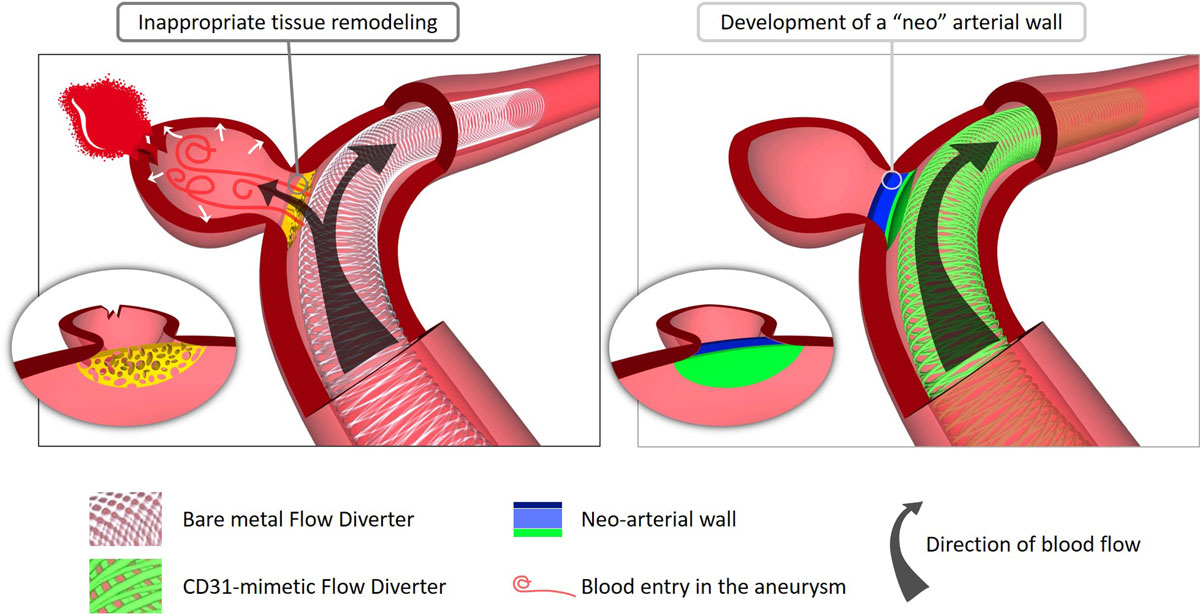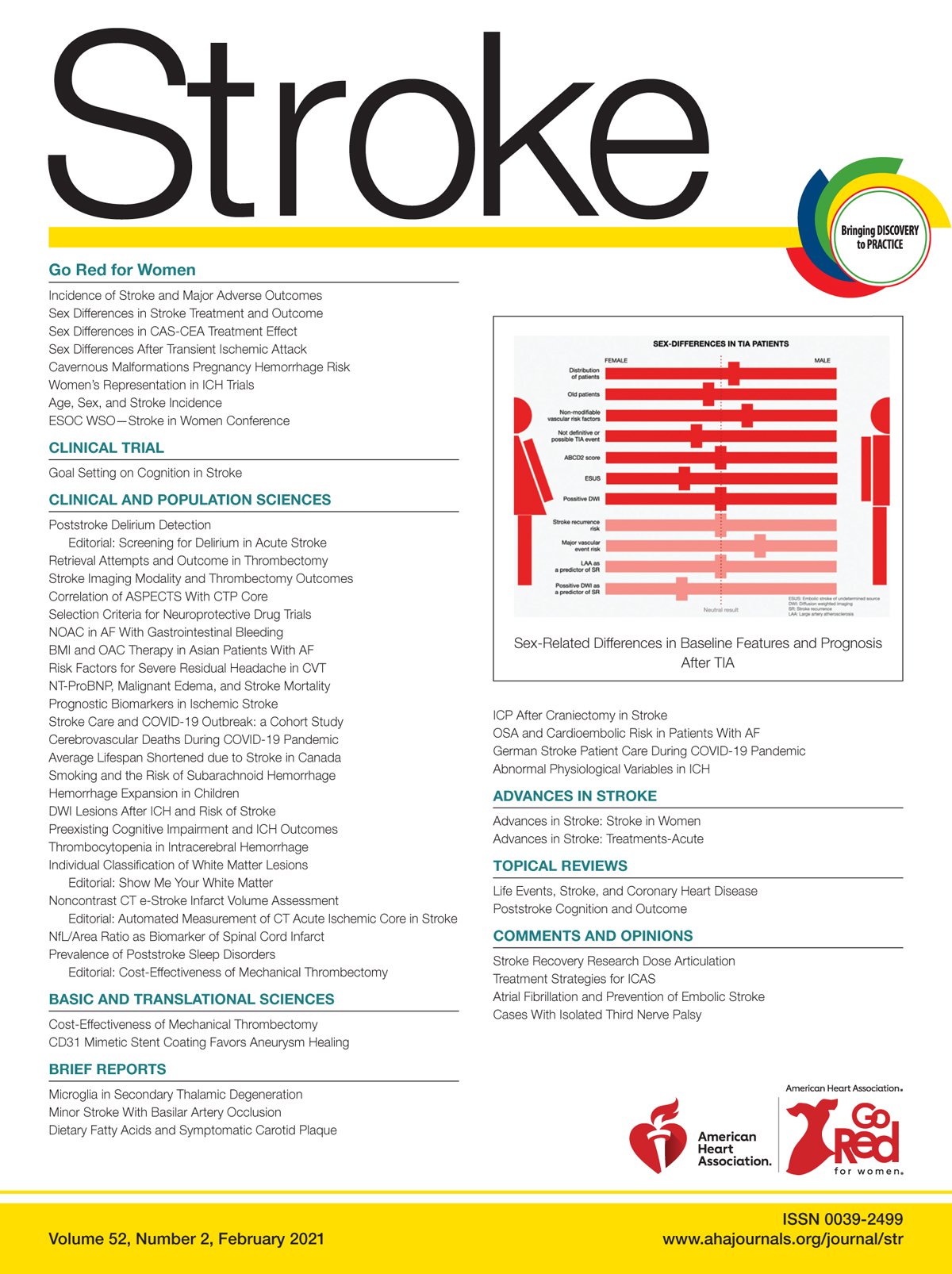CD31 Mimetic Coating Enhances Flow Diverting Stent Integration into the Arterial Wall Promoting Aneurysm Healing
†Cortese J, †Rasser C, Even G, Bardet SM, Choqueux C, Mesnier J, Perrin ML, Janot K, Caroff J, Nicoletti A, Michel JB, Spelle L, §Caligiuri G, §Rouchaud A

BACKGROUND AND PURPOSE: Beyond aneurysmal occlusion, metallic flow diverters (FDs) can induce an adverse endovascular reaction due to the foreignness of metal devices, hampering FD endothelialization across the aneurysm neck, and arterial healing of intracranial aneurysms. Here, we evaluated the potential benefits of an FD coating mimicking CD31, a coreceptor critically involved in endothelial function and endovascular homeostasis, on the endothelialization of FDs implanted in vivo.
METHODS: Nitinol FD (Silk Vista Baby) and flat disks were dip-coated with a CD31-mimetic peptide via an intermediate layer of polydopamine. Disks were used to assess the reaction of endothelial cells and blood elements in vitro. An aneurysm rabbit model was used to compare in vivo effects on the arterial wall of CD31-mimetic-coated (CD31-mimetic, n=6), polydopamine-coated (polydopamine, n=6), and uncoated FDs (bare, n=5) at 4 weeks post-FD implantation. In addition, long-term safety was assessed at 12 weeks.
RESULTS: In vitro, CD31-mimetic coated disks displayed reduced adhesion of blood elements while favoring endothelial cell attachment and confluence, compared to bare and polydopamine disks. Strikingly, in vivo, the neoarterial wall formed over the CD31-mimetic-FD struts at the aneurysm neck was characteristic of an arterial tunica media, with continuous differentiated endothelium covering a significantly thicker layer of collagen and smooth muscle cells as compared to the controls. The rates of angiographic complete occlusion and covered branch arterial patency were similar in all 3 groups.
CONCLUSIONS: CD31-mimetic coating favors the colonization of metallic endovascular devices with endothelial cells displaying a physiological phenotype while preventing the adhesion of platelets and leukocytes. These biological properties lead to a rapid and improved endothelialization of the neoarterial wall at the aneurysm neck. CD31-mimetic coating could therefore represent a valuable strategy for FD biocompatibility improvement and aneurysm healing.

